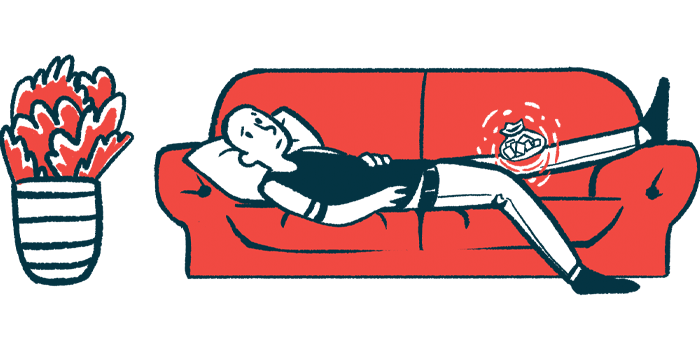Joint impairments linked to functional decline in mild hemophilia
Aging and pain have a significant influence on muscle power, a study reveals

Impairments in joint health are associated with certain functional deficits in the lower limbs among people with mild hemophilia, a study reports.
A combination of aging, pain, and joint damage had a significant influence on patients’ performance in tests of muscle power, while aging alone explained most variation in tests of endurance and balance.
“These findings highlight the relevance of monitoring joint health and functional decline in [people with mild hemophilia] with the goal of implementing earlier exercise programs,” the scientists wrote.
The study, “How does joint impairment affect the functional capacity of the lower limb in early haemophilia-related arthropathy?” was published in Haemophilia.
People with hemophilia lack certain factor proteins that are needed for proper blood clotting. Patients with severe disease — typically defined as those with factor levels less than 1% of normal — commonly experience spontaneous internal bleeds, often in the joints.
Over time, this can lead to musculoskeletal problems such as joint disease that cause pain, impair functional abilities, and diminish quality of life.
On the other hand, people with mild hemophilia — with factor levels between 5%-40% of normal — mostly experience bleeds in response to trauma or surgery. Still, spontaneous bleeds can occur in these patients, who may be less likely to recognize the signs and seek early medical attention.
Reports indicate that joint damage affects people with non-severe hemophilia, with one study finding that 90% of mild hemophilia patients older than 20 have arthropathy, a type of joint disease, in the lower limbs. However, fewer studies have evaluated how joint involvement may affect functional capacity in mild hemophilia patients relative to studies in severely affected patients.
Targeting interventions to improve outcomes
A better understanding of this issue, “can inform the development of targeted interventions to improve functional outcomes and prevent further joint damage,” the researchers wrote.
As such, the scientists examined how joint impairments influenced lower limb function among 49 mild hemophilia patients seen at two centers in Argentina. These patients, with a median age of 46, had hemophilia A or B.
The Hemophilia Early Arthropathy Detection with Ultrasound (HEAD-US) was used to evaluate structural joint damage, and the Hemophilia Joint Health Score (HJHS) to evaluate joint function. A higher score on either scale reflects worse joint health.
Patients were split into two groups based on HEAD-US scores: those with minimal to no joint damage (score of 0-2), or those with joint damage (score of 3 or more).
Participants with joint involvement assessed via HEAD-US were significantly older, had higher levels of self-reported joint pain, and higher HJHS scores compared with patients without joint involvement.
Three tests to evaluate lower limb function
Lower limb function was evaluated with three tests: the 30-second sit-to-stand test (30-STS) to evaluate muscle power; the 60-second sit-to-stand test (60-STS) to test endurance; and the Timed Up and Go (TUG) test to assess dynamic balance.
Only scores on the 30-STS were associated significantly with joint health, with individuals in the higher HEAD-US score group seeing a significantly worse performance.
Final statistical analyses indicated that variation in TUG and 60-STS scores among the mild hemophilia patients were explained mainly by age, whereas 30-STS scores were explained best by a combination of age, joint damage, and pain level.
“Overall, our results suggest that earlier haemophilic related-arthropathy may affect the functional capacity of the lower limb expressed as a decline of 30-STS,” the researchers wrote.
As such, this test could be a useful way of monitoring functional deterioration in people with mild hemophilia, the team suggested.
Age is an important factor
The data also indicate that age is an important factor in hemophilia, particularly as it relates to endurance and balance. “Comparing the decline in functionality with ageing compared to non-haemophilia populations may help target interventions to improve their quality of life,” the researchers wrote.
How exercise programs influence functionality in mild hemophilia patients also should be a topic of future study, the team noted. “Future studies should investigate the effect of exercise programs to improve balance, power, muscular endurance … to promote healthy longevity in [people with mild hemophilia].”







